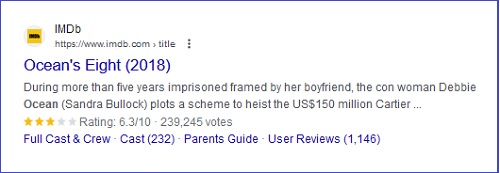Friday, February 16, 2024
A Mad Day’s Work . . . Continues.
Tuesday, May 23, 2023
“A Mad Day’s Work” (Hat tip to Pierre Cartier)*
Thursday, May 26, 2022
A Mad Day’s Work*
Thursday, July 28, 2016
A Mad Day’s Work
Yesterday was the dies natalis , in the Catholic sense,
of the great cartoonist Jack Davis.
From an obituary —
Thursday, July 21, 2016
A Mad Day’s Preprint*
See also, from that same day, "24-Part Invention."
* The title is a reference to a 2001 article by Cartier on
"the evolution of concepts of space and symmetry" —
Saturday, February 2, 2013
Mad Day
A perceptive review of Missing Out: In Praise of the Unlived Life—
"Page 185: 'Whatever else we are, we are also mad.' "
Related material— last night's Outside the Box and, from Oct. 22 last year—
"Some designs work subtly.
Others are successful through sheer force."
Par exemple—
See also Cartier in this journal.
The Cartier link leads to, among other things…
“A Mad Day’s Work: From Grothendieck to Connes and Kontsevich.
The Evolution of Concepts of Space and Symmetry,”
by Pierre Cartier, Bulletin of the American Mathematical Society ,
Vol. 38 (2001) No. 4, pages 389-408
Friday, May 31, 2024
For a Multifarious Giant
From posts now tagged VVV Day . . .
INTERNATIONAL CONFERENCE:
GROTHENDIECK, A MULTIFARIOUS GIANT:
MATHEMATICS, LOGIC AND PHILOSOPHY
CHAPMAN UNIVERSITY, ORANGE (CA)
— BECKMAN HALL, ROOM 106 MAY 24TH-28TH, 2022
Chapman University was also the academic home of
the famed John Eastman.
As for Grothendieck, see that name in this journal. He was
the subject of a notable 2001 essay, "A Mad Day's Work,"
subtitled "The Evolution of Concepts of Space and Symmetry."
Saturday, May 28, 2022
Saturday, June 21, 2014
When You Care Enough…
“… near-death experiences have all the
hallmarks of mystical experience…”
— “Bolt from the Blue,” by Oliver Sacks
(See “Annals of Consciousness,” June 20, 2014)
The late Charles Barsotti once “worked for Kansas City-based
Hallmark Cards,” according to an obituary.
See also Mad Day.
Some related deconstructive criticism:


Sunday, February 3, 2013
The Gospel According to Cartier
Yesterday's 11 AM post Mad Day concluded
with a link to a 2001 American Mathematical Society
article by Pierre Cartier that sums up the religion and
politics of many mathematicians…
"Here ends the infancy narrative of the gospel…."
"… while Simone Weil's Catholicism was violently
anti-Semitic (in 1942!), Grothendieck's Buddhism
bears a strong resemblance to the practices of
his Hasidic ancestors."
See also Simone Weil in this journal.
Note esp. a post of April 6, 2004 that provides
a different way of viewing Derrida's notion of
inscription .
Tuesday, June 22, 2010
Hermeneutics for Bernstein
J. M. Bernstein (previous post) has written of moving toward "a Marxist hermeneutic."
I prefer lottery hermeneutics.
Some background from Bernstein—

I would argue that at least sometimes, lottery numbers may be regarded, according to Bernstein's definition, as story statements. For instance—
Today's New York State Lottery— Midday 389, Evening 828.
For the significance of 389, see
“A Mad Day’s Work: From Grothendieck to Connes and Kontsevich.
The Evolution of Concepts of Space and Symmetry,”
by Pierre Cartier, Bulletin of the American Mathematical Society,
Vol. 38 (2001) No. 4, beginning on page 389.
The philosophical import of page 389 is perhaps merely in Cartier's title (see previous post).
For the significance of 828, see 8/28, the feast of St. Augustine, in 2006.
See also Halloween 2007. (Happy birthday, Dan Brown.)
Tuesday, September 2, 2003
Tuesday September 2, 2003
One Ring to Rule Them All
In memory of J. R. R. Tolkien, who died on this date, and in honor of Israel Gelfand, who was born on this date.
Leonard Gillman on his collaboration with Meyer Jerison and Melvin Henriksen in studying rings of continuous functions:
“The triple papers that Mel and I wrote deserve comment. Jerry had conjectured a characterization of beta X (the Stone-Cech compactification of X) and the three of us had proved that it was true. Then he dug up a 1939 paper by Gelfand and Kolmogoroff that Hewitt, in his big paper, had referred to but apparently not appreciated, and there we found Jerry’s characterization. The three of us sat around to decide what to do; we called it the ‘wake.’ Since the authors had not furnished a proof, we decided to publish ours. When the referee expressed himself strongly that a title should be informative, we came up with On a theorem of Gelfand and Kolmogoroff concerning maximal ideals in rings of continuous functions. (This proved to be my second-longest title, and a nuisance to refer to.) Kolmogoroff died many years ago, but Gelfand is still living, a vigorous octogenarian now at Rutgers. A year or so ago, I met him at a dinner party in Austin and mentioned the 1939 paper. He remembered it very well and proceeded to complain that the only contribution Kolmogoroff had made was to point out that a certain result was valid for the complex case as well. I was intrigued to see how the giants grouse about each other just as we do.”
— Leonard Gillman: An Interview
This clears up a question I asked earlier in this journal….
|
Wednesday, May 14, 2003 Common Sense On the mathematician Kolmogorov: “It turns out that he DID prove one basic theorem that I take for granted, that a compact hausdorff space is determined by its ring of continuous functions (this ring being considered without any topology) — basic discoveries like this are the ones most likely to have their origins obscured, for they eventually come to be seen as mere common sense, and not even a theorem.” — Richard Cudney, Harvard ’03, writing at Xanga.com as rcudney on May 14, 2003 That this theorem is Kolmogorov’s is news to me. See
The above references establish that Gelfand is usually cited as the source of the theorem Cudney discusses. Gelfand was a student of Kolmogorov’s in the 1930’s, so who discovered what when may be a touchy question in this case. A reference that seems relevant: I. M. Gelfand and A. Kolmogoroff, “On rings of continuous functions on topological spaces,” Doklady Akad. Nauk SSSR 22 (1939), 11-15. This is cited by Gillman and Jerison in the classic Rings of Continuous Functions. There ARE some references that indicate Kolmogorov may have done some work of his own in this area. See here (“quite a few duality theorems… including those of Banaschewski, Morita, Gel’fand-Kolmogorov and Gel’fand-Naimark”) and here (“the classical theorems of M. H. Stone, Gelfand & Kolmogorov”). Any other references to Kolmogorov’s work in this area would be of interest. Naturally, any discussion of this area should include a reference to the pioneering work of M. H. Stone. I recommend the autobiographical article on Stone in McGraw-Hill Modern Men of Science, Volume II, 1968. |
A response by Richard Cudney:
|
“In regard to your entry, it is largely correct. The paper by Kolmogorov and Gelfand that you refer to is the one that I just read in his collected works. So, I suppose my entry was unfair to Gelfand. You’re right, the issue of credit is a bit touchy since Gelfand was his student. In a somewhat recent essay, Arnol’d makes the claim that this whole thread of early work by Gelfand may have been properly due to Kolmogorov, however he has no concrete proof, having been but a child at the time, and makes this inference based only on his own later experience as Kolmogorov’s student. At any rate, I had known about Gelfand’s representation theorem, but had not known that Kolmogorov had done any work of this sort, or that this theorem in particular was due to either of them. And to clarify-where I speak of the credit for this theorem being obscured, I speak of my own experience as an algebraic geometer and not a functional analyst. In the textbooks on algebraic geometry, one sees no explanation of why we use Spec A to denote the scheme corresponding to a ring A. That question was answered when I took functional analysis and learned about Gelfand’s theorem, but even there, Kolmogorov’s name did not come up. This result is different from the Gelfand representation theorem that you mention-this result concerns algebras considered without any topology(or norm)-whereas his representation theorem is a result on Banach algebras. In historical terms, this result precedes Gelfand’s theorem and is the foundation for it-he starts with a general commutative Banach algebra and reconstructs a space from it-thus establishing in what sense that the space to algebra correspondence is surjective, and hence by the aforementioned theorem, bi-unique. That is to say, this whole vein of Gelfand’s work started in this joint paper. Of course, to be even more fair, I should say that Stone was the very first to prove a theorem like this, a debt which Kolmogorov and Gelfand acknowledge. Stone’s paper is the true starting point of these ideas, but this paper of Kolmogorov and Gelfand is the second landmark on the path that led to Grothendieck’s concept of a scheme(with Gelfand’s representation theorem probably as the third). As an aside, this paper was not Kolmogorov’s first foray into topological algebra-earlier he conjectured the possibility of a classification of locally compact fields, a problem which was solved by Pontryagin. The point of all this is that I had been making use of ideas due to Kolmogorov for many years without having had any inkling of it.” |
Wednesday, May 14, 2003
Wednesday May 14, 2003
Common Sense
On the mathematician Kolmogorov:
“It turns out that he DID prove one basic theorem that I take for granted, that a compact hausdorff space is determined by its ring of continuous functions (this ring being considered without any topology) — basic discoveries like this are the ones most likely to have their origins obscured, for they eventually come to be seen as mere common sense, and not even a theorem.”
— Richard Cudney, Harvard ’03, writing at Xanga.com as rcudney on May 14, 2003
That this theorem is Kolmogorov’s is news to me.
See
- the discussion of the Gelfand representation theorem on p. 397, “A Mad Day’s Work: From Grothendieck to Connes and Kontsevich,” by Pierre Cartier, Bulletin of the American Mathematical Society, Vol. 38 (2001) No. 4, pp. 389-408,
- a remark on Gelfand’s work on page 467 of the above AMS Bulletin issue,
- V. S. Varadarajan‘s discussion of the “Hilbert-Gel’fand principle” on page 11 of “The Concept of a Supermanifold” and the “Gel’fand Principle” on page 11 of “What Is the Geometry of Physical Space?,” and
- the excellent 1963 textbook Introduction to Topology and Modern Analysis, by George F. Simmons, chapters 13 and 14.
The above references establish that Gelfand is usually cited as the source of the theorem Cudney discusses. Gelfand was a student of Kolmogorov’s in the 1930’s, so who discovered what when may be a touchy question in this case. A reference that seems relevant: I. M. Gelfand and A. Kolmogoroff, “On rings of continuous functions on topological spaces,” Doklady Akad. Nauk SSSR 22 (1939), 11-15. This is cited by Gillman and Jerison in the classic Rings of Continuous Functions.
There ARE some references that indicate Kolmogorov may have done some work of his own in this area. See here (“quite a few duality theorems… including those of Banaschewski, Morita, Gel’fand-Kolmogorov and Gel’fand-Naimark”) and here (“the classical theorems of M. H. Stone, Gelfand & Kolmogorov”).
Any other references to Kolmogorov’s work in this area would be of interest.
Naturally, any discussion of this area should include a reference to the pioneering work of M. H. Stone. I recommend the autobiographical article on Stone in McGraw-Hill Modern Men of Science, Volume II, 1968.













